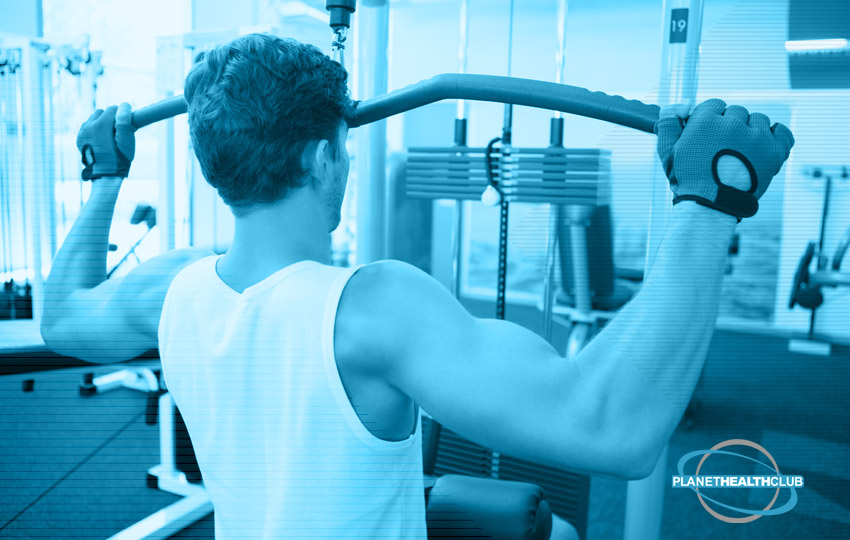
Delts for days, the science behind bigger, stronger shoulders.
When it comes to dominant muscle groups regarding hypertrophy (increase in muscle size), men and women don’t always see eye to eye. One muscle group we can agree on, however, is bigger stronger shoulders. Not only do fierce delts create a strong frame, but having mass surrounding this hypermobile joint is also important for mobility and injury prevention.
You may have heard that ‘less is more’ in relation to building mass, but this isn’t necessarily correct. To explain why this may not be the case we must explore 2 dominant mechanisms of hypertrophy.
Sarcoplasmic hypertrophy is when the sarcoplasm (the fluid inside the muscle cell) increases its volume which makes the muscles larger and fuller. This mechanism may be ideal for gaining mass but poses limitations regarding increases in strength. This method of hypertrophy is achieved my using lower weights and often bands (≥8 rep range), to force blood and metabolic waste into the cell. This is often showcased in Instagram ‘booty workouts’, using loop bands to stimulate the accumulation of Sarcoplasmic fluid.
Myofibrillar hypertrophy on the other hand, which refers to an increase in the amount of protein contained in individual muscle cells.
It’s called “myofibrillar” hypertrophy because myo means “muscle,” and a fibril is a threadlike cellular structure. This mechanism is stimulated predominantly via compound lifts like squats and deadlifts using heavyweight in lower rep ranges (eg.1-6).
Ok, so. What does this mean? Well, without getting too technical, to optimise muscle growth and minimise recovery time, it’s not a bad idea to do a bit of both.
DOMs (delayed onset muscle soreness) are caused primarily by Myofibrillar hypertrophy. So, to minimise downtime in between training days (sore shoulders will certainly still affect your bench), using a combination of these 2 mechanisms is advantageous. Combining these techniques also ideal as lower reps with higher weights can also be taxing for those of us under time restraints. Not all of us have 3 minutes to sit twiddling our thumbs in between sets for the entirety of our workout.
So let’s put this all into context. This workout is an example of how to utilize different mechanisms of hypertrophy to build your shoulders if you train them once a week. I would recommend hitting them twice if you are indeed looking to increase size. If this is the case, half this workout either splitting it 50/50 – high rep low weight and high weight low rep or you may divide it between a heavier day and lighter day.
- Dumbbell Shoulder Press
Sets: 4, Reps: 5-10,Rest Time: 60-90 Seconds, Pace: 2 Seconds Down
- Standing Barbell Military Press
Sets: 4, Reps: 5, Rest Time: 120 Seconds, Pace: 2 Seconds Down
- Dumbbell Lateral Raises
Sets: 4, Reps: 6-10, Rest Time: 75 Seconds, Pace: 2:1 (two seconds down, one second up)
- Dumbbell Arnold Press
Sets: 3, Reps: 8-12, Rest Time: 60 Seconds, Pace: 2:2
- Dumbbell Shrugs
Sets: 4, Reps: 8-12, Rest Time: 75 Seconds, Pace: 2:1
- Seated Dumbbell Rear Deltoid Raise
Sets: 4, Reps: 10-15, Rest Time: 75 Seconds, Pace: 2:1
Other important training variables to consider include
- Training all heads of the deltoid
- Ensuring caloric surplus with high protein content pertaining to nutrition
- Putting the muscle through full ROM (range of motion), creating long functional and robust muscle fibres is not only important for mass but more importantly for functionality.
- As always stimulating progressive overload. Einstein defined insanity as doing the same thing, expecting a different result. Regarding training, if you’re capable, you probably should.
For help performing any of the aforementioned training techniques or exercises, our members of staff are always happy to assist you.
Stay jacked yet functional,
Fiona.





